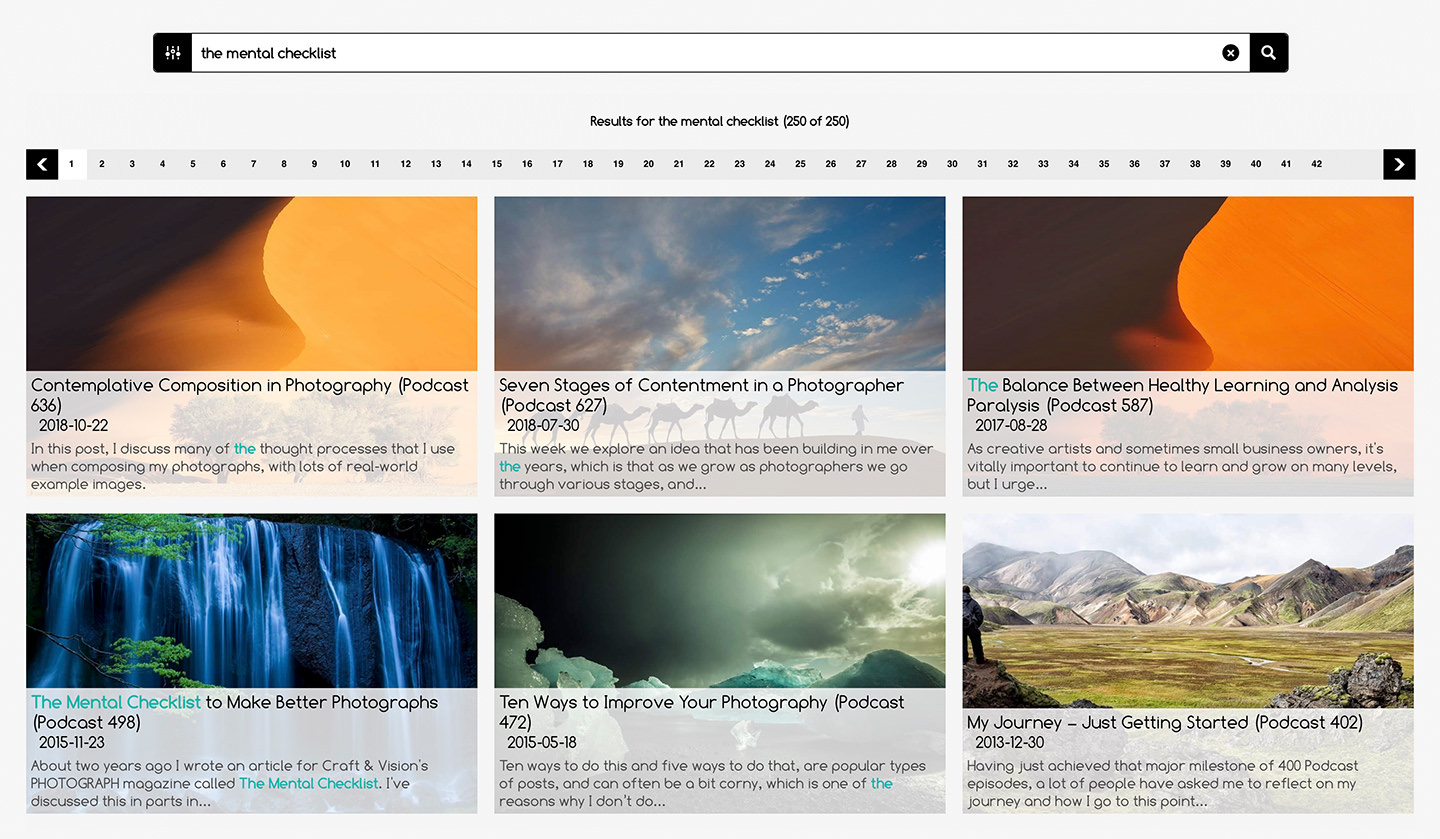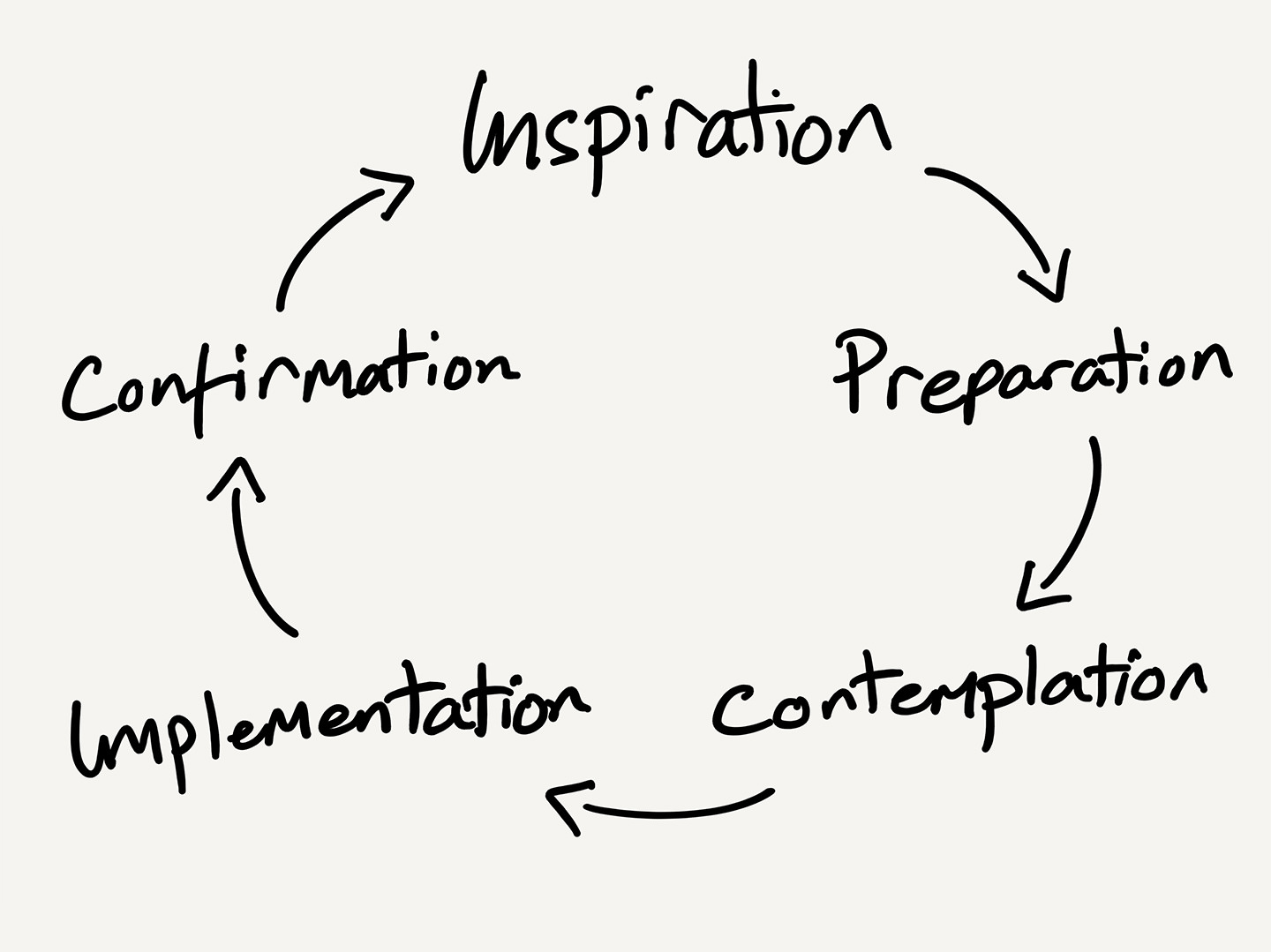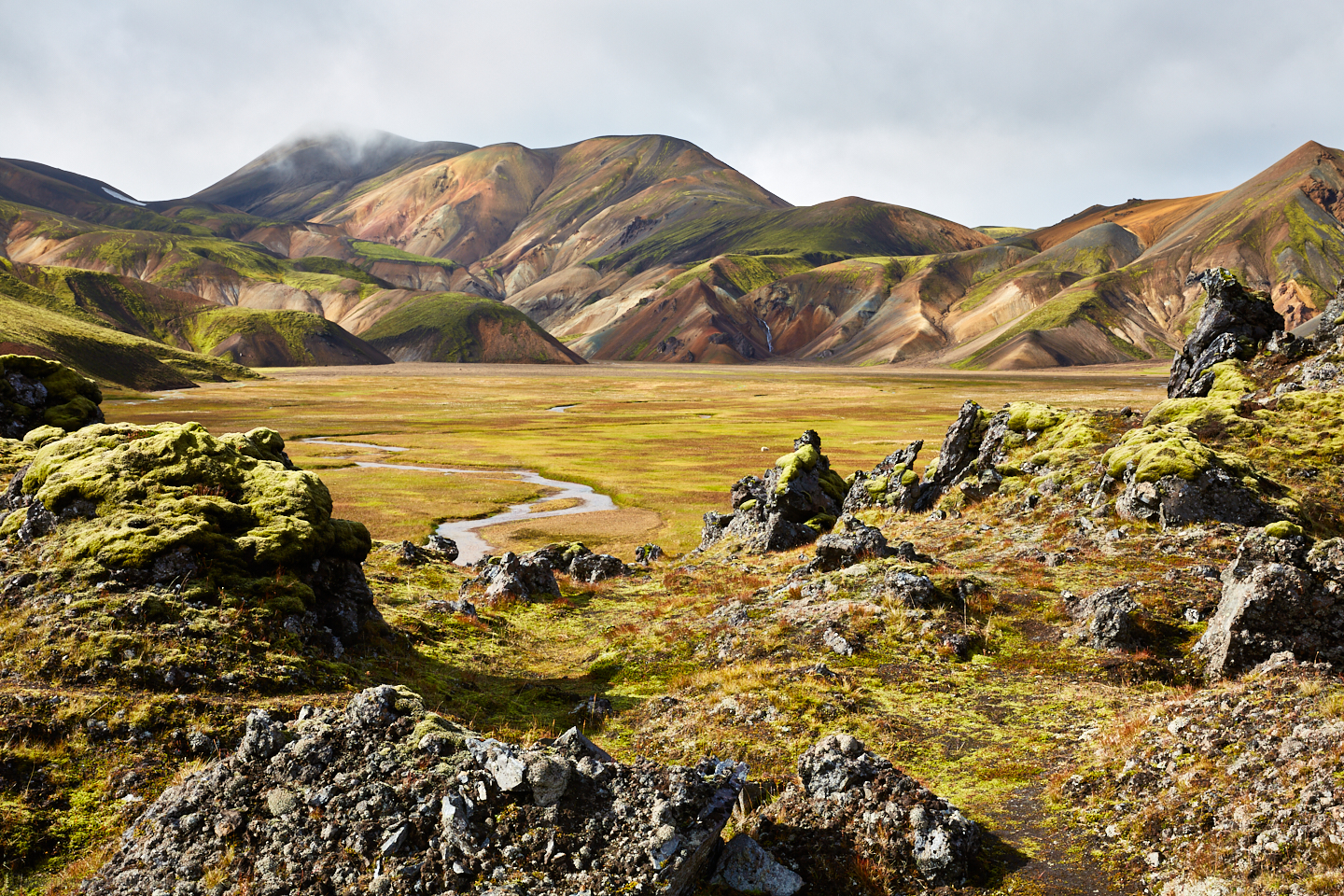Visit Library for MBP Pro eBooks |
Before we jump into this week’s topic, I need to let you know that the 5DayDeal team are putting on another sale and presale giveaway that starts by the time many of you will listen to this podcast or read the post.
The Giveaway starts on October 10 at noon, Pacific Time, and the 2020 Photography Bundle launches on October 15, again at noon Pacific Time. As the name implies, the sale lasts for just 5 days, so if you read this before the end of October 20, do check this out. If you visit this page before these dates, please do go and check out the 5DayDeal website, and level-up your photography, or at the very least, broaden your knowledge and capabilities with the awesome tools and educational materials that you’ll receive as part of your bundle.
Let’s jump into today’s topic though. A few weeks ago I did a talk for the Oakville Camera Club, and included a number of slides on a topic that I’ve been gradually thinking about over the years, regarding looking for a style. As we start to learn more about photography, there comes a point where many photographer’s start to ask about finding their style. You’ll hear questions like “How do I find my style as a photographer” where the real question, which I also hear, is “How do I develop my style?”
The questions regarding searching for or finding a style are not necessarily flawed, if you are consciously thinking about looking within ourselves for the style, but the idea of looking outside of yourself to find your style is, in my opinion, fundamentally flawed, simply because, for our style to be truly ours, it can be nowhere else but already within us. Any style that you find or create based on external influence can never be yours.
Of course, we see imagery all the time, and we are visually influenced every time we view or imagine something that modifies our perception or appreciation of the world around us. Whenever we make a decision as to how we will compose a photograph, what exposure to use, when to use a wide aperture for shallow depth of field, or smaller aperture to get more of our photograph in focus, or even simply whether the image should be in portrait or landscape orientation. Every decision we make as we work comes from all of the influences that we’ve had until the point that we release the shutter.
That right there though, is exactly why our style is ours and ours alone, and why I truly believe that looking for a style as such is not something that we need to actively pursue. We form opinions about the world around us based on our life experiences, and these things help to form the core of our characters. This doesn’t only include positive experiences, as even some seemingly negative experiences, can make us better people. Of course, there are times when childhood maltreatment and other traumatic experiences scar an individual and can create some negative characteristics that we don’t really need to get into here, but assuming you aren’t an ax-wielding homicidal maniac, generally, our experiences in life tend to make us stronger in character.
This character forms a foundation for any style that we will ultimately start to see in our art, be it photography, or any other form of art. I’d hazard a guess that most people don’t spend a whole lot of time thinking about how to become a better person. Good, in itself, is totally subjective, of course, but assuming that we are relatively happy with who we are, we probably arrived at that point without having to consciously work on our character.
I believe that we gradually form a style subconsciously as we perform the act of creating our art. If you look at any one image, with nothing to compare it to, you will unlikely see anything that leads you to the artist, unless it’s someone that has become known for a specific style, but they didn’t arrive at the point where their style can be recognized with one image.
As the viewer, it takes a relatively large body of work for us to recognize the similarities that we start to recognize as a style, but from the artists perspective, it will rarely be the result of sitting down with a pencil and paper and drawing out a plan on how they are going to develop that style. It’s generally a completely organic process, and comes from doing the art time and time again, but I believe that the purest styles are directly linked to the underlying character of the person creating the art, and it’s profoundly moulded into a style over many years.
Shoot From the Heart
Of course, there are young artists that crop up from time to time with what we might consider to be amazing styles, and without doubt, artistic pursuits come more easily to some than others, but there are very few real overnight successes. Even someone that seemingly becomes amazing overnight, generally has years of becoming who they are to bolster what they have become, and there is no saying that what we see at any given time will be the same as the art that they will continue to create for years to come.
If, though, they are true to themselves in the decisions that they make as they create their art, there will generally be an underlying style that is visible and common through their work over decades, if not, ultimately, over their entire lives. This is why I often find myself saying that we have to shoot from the heart, and why I believe that we should not look externally for our style. Nothing that you can find outside of yourself can possibly be you. Your style can only come from within, based on your own sense of aesthetic, with a foundation of your character, which is, as I say, a culmination of all our life experiences until the point that we release the shutter.
Overcoming Technical Hurdles
The other major part of the puzzle, is developing our technical ability and understanding of our cameras and the effect that the settings have on the image, to the point that it becomes almost second nature. The technical aspects of photography are important, but by the time we are making our art, will hopefully be completely second nature, and simply support the creative process, and not get in the way of it. If you find yourself missing shots in the field because you can’t figure out how to adjust the settings of your camera to create a certain look, then you need to study the manual and get a better understanding of the fundamentals of photography.
Of course, we can bang our cameras into full automatic mode and still make photographs, but there will come a time when you want a certain look, and you’ll need to understand how to achieve that look, and hopefully be so fluid with that knowledge and technique that you simply go to work when the time comes to make the image.
You may recall me talking about The Mental Checklist, that I started to work through many years ago, shortly after I started this Podcast, and found that I was able to prevent myself from making mistakes in the field by asking the questions that I knew I’d ask later as I prepared for a new post about the shoot. By simply being more deliberate in the field, I started to overcome issues that were preventing me from becoming a better photographer, and doing that year in year out has gradually made me more and more confident in my ability to simply knuckle down and do the work, and get the results I am looking for.
In fact, I just did a quick search for my Mental Checklist post to get the episode number, and the results page was full of posts that I feel I should also reference, such as my post on the Seven Stages of Contentment in a Photographer, and The Balance Between Healthy Learning and Analysis Paralysis.

The Pentation Cycle
I also just did a search online to see what people have written about the stages of the creative process, as I seem to recall seeing this in the past, and many of them talk about something similar to Preparation, Incubation, Illumination, Evaluation and Implementation. In my mind, this is over conceptualizing the creative process for much of the photography that I’m thinking about as I write this post. For sure, if you have been given an assignment to create a certain type of images, maybe as a commercial assignment, these stages may come into play, but in my opinion, for a photographer working mainly for yourself, this would be something closer to Inspiration, Preparation, Contemplation, Implementation, and Confirmation.

By the way, I’m calling this the Pentation Cycle, but you won’t find that in a dictionary. I just made it up. All five words end in “tion”. Five “tions” so pentation.
I’m thinking that the process starts with either some kind of inspiration as to what you want to shoot, be it a studio shot completely dreamed up, or a location photo, where you have seen or heard of a location that you felt you’d like to photograph. The Preparation phase would be actually pulling together the gear and/or items required for the image. You might need a special kind of lens, or maybe need to book a model, or even book a flight etc.
You’ll then need to Contemplate how you are going to make your images. This may be when you are in the field, and have just seen a specific location or subject for the first time, and you need to think through your mental checklist for possibilities that will give you or at least start to lead you towards the images you feel work. The Implementation is the actual recording of the images, and is often going to be part of a mini cycle that will include more contemplation, and also confirmation as you check your images, so we have a little sub-loop going on here as we work the scene or subject.
The Confirmation stage takes a number of forms. As I say, there is confirmation as part of a mini-loop in the field, but then assuming you’ve done all you can in the field, you need to confirm that your images meet your expectations when viewed on the computer. The more you do this, the less likely that you’ll run into problems at that stage, but it’s important to check. Then there is the confirmation with at least one trusted critique that you are on the right track. This stage is more or less important depending on your goals and also depending on what drives you.
For me, the main thing that I want from my images is for them to bring a smile to my face when I look at them later. If possible, I want them to give me goosebumps, and enable me to smell the air that I breathed as I was shooting the photograph. As a very close second most important aspect, deep down I want my wife to like the work. If she doesn’t, and I do, I will still like it. We are not the same person, and she doesn’t have to like everything that I do, but since I was a child, I respond well to praise, and I think that most of us do, so this is probably more of a driving force for me than I’d like to admit, even to myself.
After that, the cycle starts again. The inspiration for another location or subject will pop into my head, and I’ll start to think about what I need to do to make it happen, and get myself to the place where I can start to contemplate what I feel will work, then make it happen. The mini contemplation and implementation loop continues as I shoot each each, and when working with digital, there’s no shame in chimping to ensure that we’re hitting the mark, but as I say, the main confirmation in this loop comes later, as we check our results and confer with our trusted critique.
Everything That Comes from the Heart is Original
I’d also like to revisit a concept that I introduced in episode 571 entitled Be a Creator Not a Collector of Photographs. Some may think this is cynical or pessimistic, and some will think that I’m just being a realist, but pretty much everything on the planet has already been photographed, and from pretty much every angle imaginable. Getting down low or climbing onto a ridge is rarely if not never going to give you the “something different” that many people strive for.
My main goal, and I’m completely serious about this, is for my work to be original to me, and to achieve that, I have to go into a shoot with as little visual input about a location as possible. In our now so very visual world, it’s hard to visit somewhere that we’ve never seen, and some of the inspiration for a new location to shoot that I mentioned earlier will mostly come from some kind of visual that gets into my eyes and makes me want to go, but once I have that desire, I stop looking at images. I might use the Photographer’s Ephemeris to scout the best place to stand based on an illustrated map, and I may even use Google Maps satellite view to get an idea of what I’m going to see too, but I try very hard to avoid looking at other peoples’ photographs of the location before I go.
If you look at other peoples’ photographs, you turn up at the locations, and immediately start looking for their images, or arguably worse still, you see their images and then rule that out as a shot, as beautiful as it may be, because you want “something different!” and that right there is where it all falls apart. The only reason that what you would ultimate shoot feels different to you is because you didn’t look at all of the other images of that same location, so if you take that back a step, and avoid looking at any images before you visit, everything you shoot is completely original!
In the greater scheme of things, with the cynical view that everything has already been done, we can flip that around and state that nothing is original, but that is where I draw the line. If nothing we can do now can ever possibly be original, there is no point in even getting out of bed in the morning, but I’m not having any of that. I will close my eyes and avoid external influences, shoot from my heart, and know that everything I come home with was me, shot with my own style that comes from within, and it will be totally original to me, and that is all I need.
Believe it or not, when I walked out to the edge of the lava field at Landmannalaugar in Iceland for the first time, led by my friend and partner for the four tours I did there, Tim Vollmer, I had never seen that valley that still to this day, I feel is a little bit closer to heaven than most places I’ve visited. I shot that valley with no preconceptions, and you know what, I just searched for the place to check that I spelled the name right, and most of the images that showed up in Google look just like mine, but I don’t care one bit. I love the work that I have and it is 100% original to me, because I’d never seen a photo of the place before I shot it.

Over the years I’d meet with different conditions, and try to get different angles to the shots that I already had, but it was all based on what I personally already had, and I find that incredibly satisfying as a photographer and an artist, or creative.
Mimicking Is Not a Sin
Before we finish I’d like to clarify a few other points that will probably come up as you think about this stuff. First of all, yes, it’s fine to mimic or gain inspiration from other photographers or any other art form for that matter. I’m not saying that you have to close yourself off to other art. Especially when we are just getting started, mimicking the work of photographers that you admire can be a great way to hone your skills.
I also believe that we draw compositional possibilities from a mental database of images as we work, and they don’t necessarily all have to be our own. I have found though that over the years, I have started to draw more from my own previous work, as I try to improve on what I already have. Thousands of possibilities flash through our mind as we work a composition, and when you don’t have much work on your own to draw from, it’s natural to think of other peoples’ imagery.
I also find that I’m not just drawing from work that I did, but also work that I wish I’d done. I sometimes get back from a shoot and kick myself for not doing something that maybe escaped me in the field for one reason or another. I try to remember these lost shots that haunt me, and then try to realize them as future opportunities arise.
Nothing is Set in Stone
Also, I’d like to note that just as we mature as human beings, it’s fine for our photography to change over time. In fact, I’d go so far as to say that it would not be natural for it to remain the same, year in, year out. Even when we revisit the processing of images on occasion, we may find that what we liked in the past is no longer the case. I recall processing my Landmannalaugar shot above considerably more vibrantly when I first shot it. I was using Nik Software’s Color Efex Pro for much of my color work at the time, and the results were sometimes a little bit too colorful for my liking now.
I still like to give my images a little bit of punch, but not quite as much as before. The same goes for my black and white work. I would often take parts of the sky down to almost black as I do like that dramatic look, but these days I’m less likely to take it quite so dark. This is also one of the benefits of working with Capture One Pro, or any software that allows you to keep your images in the raw format, but for me especially the case with Capture One, because I can get the look that I want from my raw files without using tools like Color Efex Pro any more, and because the changes are against my raw files, if I decide to change anything, I simply go back to my image and tweak the sliders.
When you bake your changes in to a Photoshop file or a TIFF, you have to go and pull out your raw file and start all over again, and that is a huge waste of time that I really prefer to avoid. Anyway, the point is, it’s fine to change over time, but again, this comes down to our work coming from within. We change as we mature as people, so it’s only natural that our work gradually changes with us.
Be True to Yourself and Your Work Will Follow
I’d like to reiterate the importance of shooting from your heart and why I think it’s fine to do so, even if some of your work may not be original in the great scheme of things. Ultimately, when we work from our heart, and try to keep our work as uncontaminated as possible, we cannot help but infuse some of our own character, that comes from our own life experiences into that work. Not everyone is going to like it, but you know what? That’s just like your character too. Nobody can be liked by everybody else. We are always going to run into people that we just rub up the wrong way, as hard as we might try to make them like us. We have no control over how people perceive us. It helps to smile and treat people with respect. Being obnoxious is obviously going to help you to not be liked, but even when we are on our best behavior, we cannot ensure that everyone we meet likes us. And the same goes for our photography, so we have to be OK with that.
We live, every minute of our lives, until we die. That’s how it works, and we have no choice, but we do have a choice when it comes to how we spend each of those minutes, and the more of them that we spend indulging in creative thought or a creative pursuit, the better we will gradual get at it.
60,000 Hours
I just did a search for the theory of it taking 60,000 hours to master a craft, which I seem to recall hearing somewhere over the years. Having spent most of my adult life in Japan, I was happy to find an article which reminded me that in Western culture, it’s 10,000 hours to master something, and the 60,000 that popped into my head was the number used here in Japan, where craftsmanship is often a lifelong pursuit. I’ve said enough for one post, but I’ll leave you with two quotes from the article and encourage you to have a read for yourself too. The first is “There are no shortcuts to greatness.” and the second, is the closing sentence, “That human element will always come first, no matter what.”
Show Notes
SHOW NOTES HERE
Subscribe in iTunes to get Podcasts delivered automatically to your computer.
Download this Podcast as an MP3 with Chapters.
Visit this page for help on how to view the images in MP3 files.




Love it.
Hee hee. Thanks Bruce!
Thank you! Much to think about. Will read it again as it deserves at least a second read …
–Angela
You’re very welcome Angela. I hope you find this useful.
Regards,
Martin.